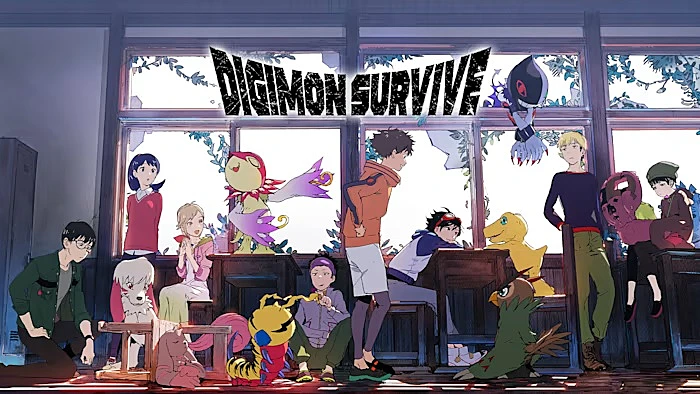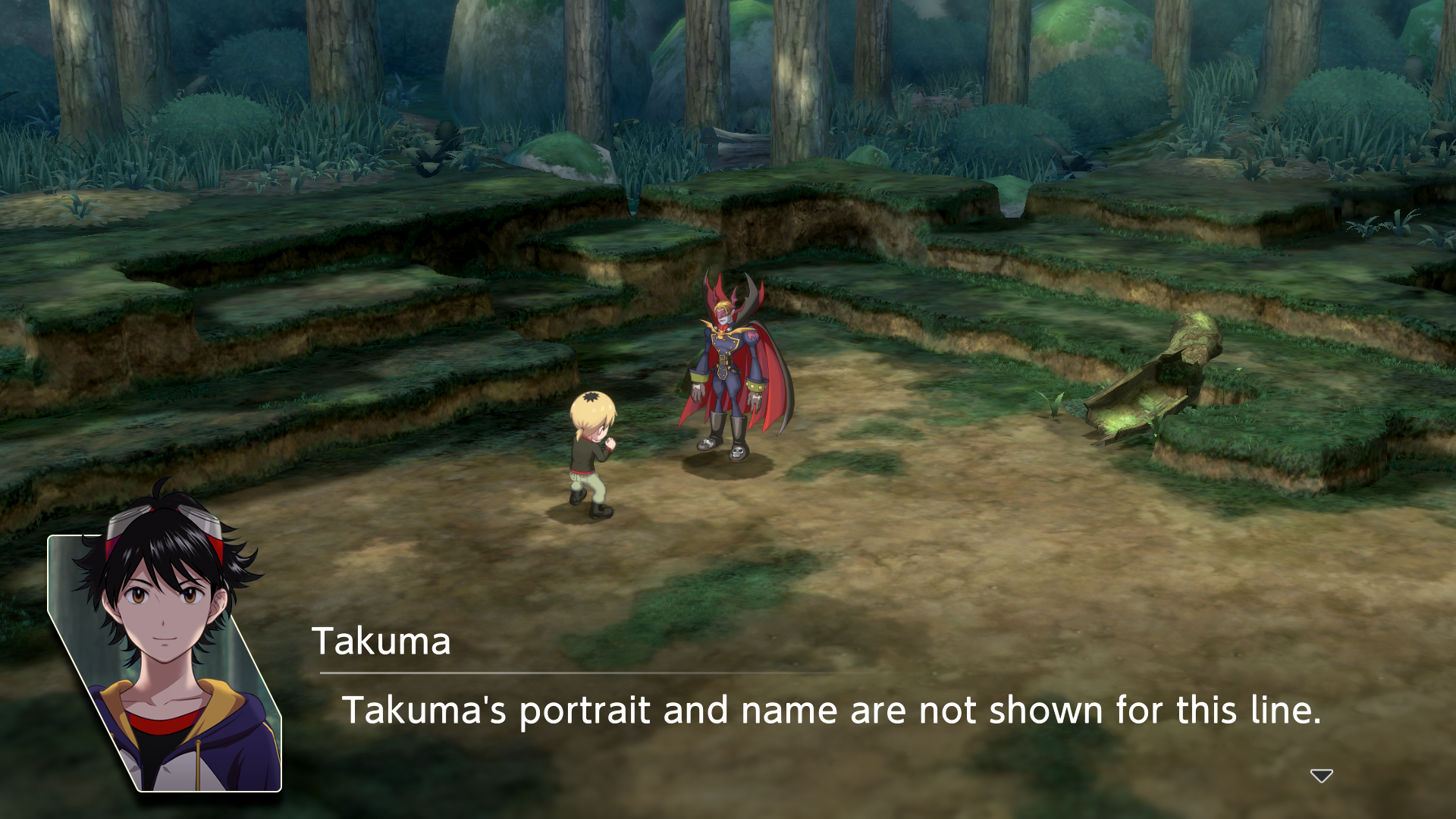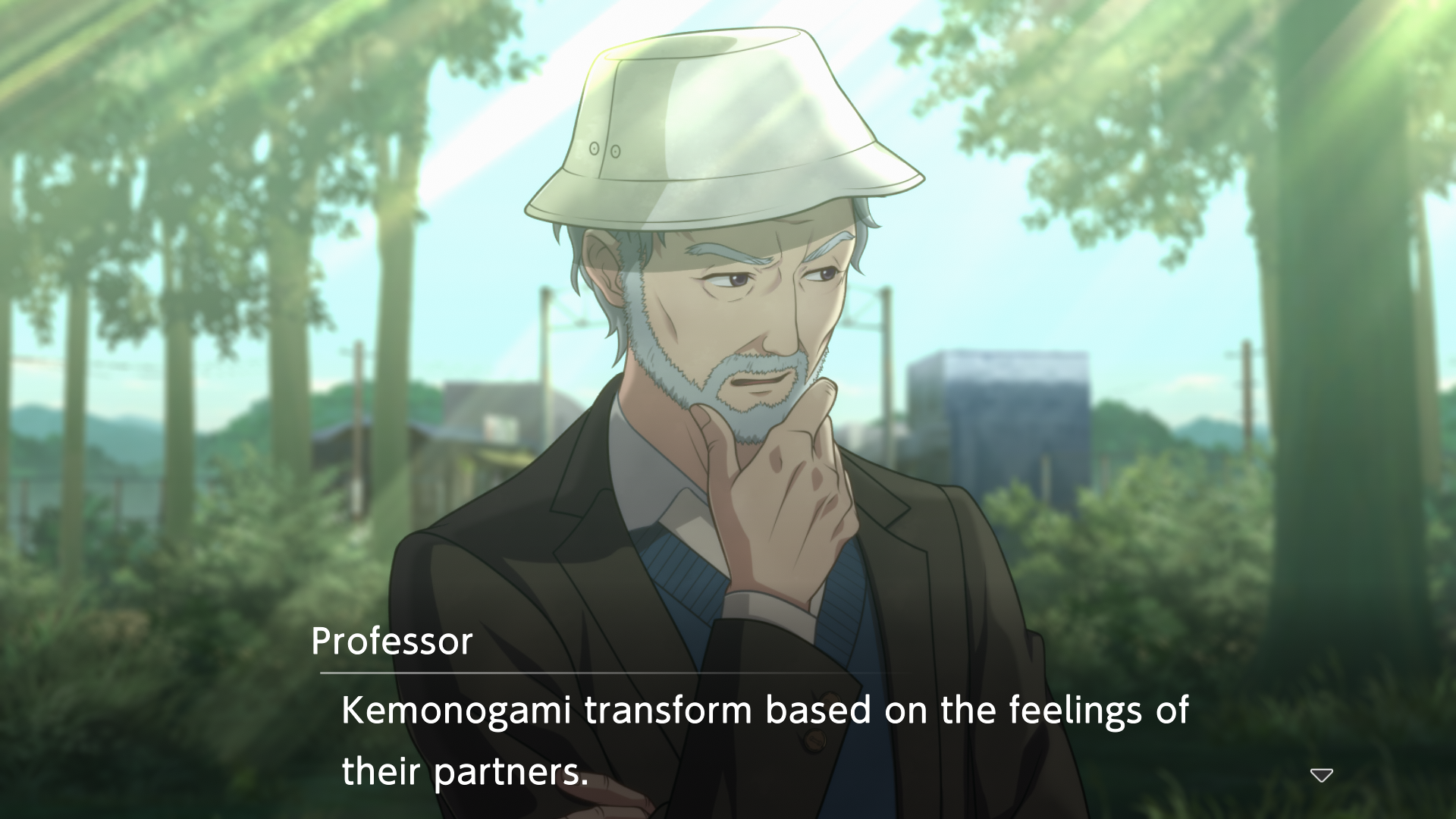After numerous delays and what feels like a surprise release, Digimon Survive is finally in the wild. Part horror visual novel and part tactics RPG, it follows a group of lost students teleported to a world of monsters. Their goal is to understand why they’re there and escape the dangers of this unknown land with their lives.
Despite Digimon Survive‘s extended development period, there are still a fair amount of awkward bumps along the way, keeping it from reaching the heights that fans so hoped it would. Issues with the translation are far too common. The story pacing is a little too slow. And the tactics-based combat is a bit too repetitive. It’s a shame since, in spite of these issues, Digimon Survive is still a captivating experience.
Digimon Survive Review — Digivolve or Die
The story begins with the cast on a school camping trip at some local ruins. When a series of landslides hit and block the way to the shrine of the beast god, The Kemonogami, a local girl, Miu, offers to help. But things don’t go as planned, and they’re sucked through a portal into the land of digital monsters.
The Digimon world is a more dangerous one than in many other games. Main characters can die in the fog that occasionally blankets the island, and the Digimon themselves don’t understand how their home works. To complicate matters, the main antagonist group has taken to sacrificing human children to the fog to drive it back, which is why they’re so interested in our main cast.
This adventure plays out over a prologue and a subsequent 12 chapters broken down into three sections each: Exploration, Free Action, and linear narrative. Exploration and Free Action are basically the same, though Free Action has a move limit, whereas Exploration does not. In these sections, you’ll choose from a list of locations to visit with a number of intractable objects, such as pieces of furniture, a weird tree, or location landmarks. The ultimate purpose of visiting these locations is to meet other story characters and raise their Affinity, the system Survive uses to track how much others like Takuma, the player character.
Affinity features a list of dialog options and increases when Takuma says things characters enjoy. Occasionally you’ll make a Karmic choice, a complimentary system that tracks important choices and revolves on three axes: Harmony, Wrathful, Moral.
These are never as black and white as a “good option” or an “evil option” but more nuanced and realistic. I never picked a Wrathful response and felt like I was being a jerk or that I was bound to a binary kind/unkind option. That each choice is a different but reasonable way to handle a situation helps create a greater sense of personal expression within the system.
Most of the Karma choices appear in the linear story sections, which fall between or after Exploration and Free Action segments. These typically include a set goal or destination, though you can sometimes pick between people to talk to or locations to explore. Either way, you’ll need to visit one specific area or talk to one specific character eventually, so they all funnel to one place.
The affinity system especially blends well with the complexities written into the cast and adds a palpable sense of realism to Digimon Survive. As in real life, personalities here are varied, and understanding some characters is easier than others. I immediately connected with Minoru and Mio, for example, but there were other characters I never really got a handle on – and it made raising their Affinity difficult. Others still were in between, and I could get their responses right about half the time. These diverse interactions give the very tangible sense that you’re interacting with real people.
Part of the reason the personalities are so strong is because of how varied they are. The main cast members could have easily been standard anime archetypes into the power of friendship with “Never Give Up!” attitudes. Refreshingly, they aren’t. Instead, how they think about and interact with situations is handled with nuance. When one of the cast negatively impacts the morale of the group, there’s a discussion on whether they should be cut loose to preserve the group, with each character having strong, independent opinions.
Some characters don’t get along with their Digimon partners, either, further adding to the game’s sense of authenticity. Two of the students, Ryo and Shuuji, are complete jerks to their monsters, so much so that I started to feel bad for their Digimon. They’re thrown into this life or death situation tethered to such hateful people. It’s something that changed how I played the game, and I spent time with Ryo and Shuuji because I thought raising their Affinity would make them be nicer to their Digimon. Ultimately, my efforts were fruitless since all four of them died in my playthrough.
The visuals of Digimon Survive are jaw-dropping. The character sprites all look fantastic. Each character design is aesthetically pleasing and fits their personalities. The characters are also animated for a small amount of time when they enter the screen. It’s a nice touch even if there is only a little of it. The characters feel more alive than in other visual novels like early Ace Attorney games or GNOSIA. The effect isn’t as dramatic as 13 Sentinels: Aegis Rim, but it’s effective and bolsters the concept that you’re playing through a Digimon anime.
The environments are equally gorgeous. They’re a mix of 2D sprites with polygonal structures in a 3D space. The cinematography of the scenes takes full advantage of that space. The camera will swing purposefully through story scenes as they progress. The amount of drama added to the story beats from the camera work shows off what is possible with visual novels in a 3D space.
The orchestral soundtrack works as a complementary backing layer to what each scene is trying to convey, falling into somber tones or rising into bombast when needed. No arrangement ever feels out of place. Thankfully, then, the music is great. You’ll be listening to a lot of it.
There is voice acting to fill some of the gaps, but it isn’t in most scenes, and it’s exclusively in Japanese. The lion’s share of scenes are text only, so you’ll only be guided by the soundtrack as – the clicking of your buttons as you progress dialogue. The voice acting is wonderful, though, emotive and capable of conveying the harsh shifts in a character’s psyche. Even if an English voice-over was out of the budget, I would have liked to have the Japanese voice-over throughout the entire story.
Despite how taken I am with the visual novel portion of Digimon Survive, it isn’t all good. The translation is poor, with numerous grammar mistakes. Sentences have continuity errors in them, and some dialog doesn’t make sense for a given situation. An optional cutscene has an editor’s note in it. In need of at least another proofreading pass, if not two, it’s shocking how many silly mistakes are in the script.
There’s another system in the visual novel portions of Survive that’s tacked on. That being Takuma’s phone camera. On location screens, Takuma can take out his phone camera and scan the area for distorted spots. Focusing the camera on that spot will reveal hidden objects like training items or encounters such as battles. The game tells you where to point your camera 90% of the time. There are spots that aren’t explicitly told to the player that reveal background lore for the island, which is neat. That’s about it, though. The camera never really amounts to more than another button to press.
The worst problem Digimon Survive has is its pacing. It’s incredibly slow and not always in an interesting way. Survive does not believe in subtlety or trusts the player to understand things the first time. More often than I want, the text will try to clarify concepts that were already clear. If a character is acting weird, Survive will make sure that you’ve noticed.
How overt the cutscenes can be isn’t the only issue; too often, Survive’s pacing veers into tedium. In the linear story sections, you’ll spend your time doing the same task in locations that are far too similar. There are three chapters that see Takuma running through look-a-like corridors and performing the same actions, and Part 5 has an insufferably mind-numbing section in which you go down several tunnels while trying to convince your squadmates they’re seeing illusions – over and over again.
I’ve saved talking about the tactics RPG portion of Digimon Survive for so long because it’s basically an afterthought. Like most TRPGs, combat plays out in the typical grid-based battlefield where each Digimon makes moves on their turn and order is based on each character’s Speed stat. Characters can attack, defend, use abilities, or use items as expected. Despite the overall monotony, there are two unique twists to the combat, Digivolving and the Talk function.
Story Digimon can evolve at will mid-fight. Being in their evolved state comes at a flat SP — Survive’s version of mana — cost per turn. Any turn that your units are evolved and don’t contribute to the fight is wasted SP. This adds another layer of strategy to fights that need more elements like this. There’s an elemental resistance system with type advantages, which would help, but it never mattered in a way where I had to learn them.
The Talk function allows you to buff story Digimon or recruit wild Digimon into your party by answering questions correctly to charm wild Digimon into liking you. Once charmed, you can either ask them to join you with a random chance of success or to give you an item.
This system smartly ties into the story in a very clever way. Occasionally, you won’t be able to buff story Digimon by talking to them because their human partner was sad or mad and didn’t want to talk to anyone. I couldn’t use a combat mechanic because of someone’s emotional state in the story, further compounding the complexity for each character.
Ultimately, nothing about combat will dramatically shift how you think about Survive unless you hate it. The combat sections are fine. Not transcendental, but serviceable. Like the story, pacing issues abound. Battles take too long and play out in uninteresting ways. My ideal version has every character able to move one or two spaces more than they currently do. Too many turns are spent moving the max number of spaces then doing nothing because everything is out of range.
Digimon Survive Review — The Bottom Line
Pros
- Interesting and engaging story.
- Excellent characterization.
- Visually beautiful with animated characters.
- Pleasant soundtrack.
- Camera work makes each scene dynamic.
Cons
- So many translation errors.
- So much filler.
- Combat is slow and rarely additive.
- Voice-over isn’t used throughout.
Digimon Survive is a frustrating game from a critical perspective. It could have been great and done so without caveats. I’m a big fan of these characters, and the story and the writing are very good. I laughed. I felt sad. I audibly gasped at moments. Digimon Survive should have been an easy recommendation.
However, It seems like the scope got away from the development team, with the game suffering for it. Translation errors abound. Some accompanying systems aren’t refined enough to become more than filler. Too many of the battles are spent on empty turns. Too much of the story is reading dialogue that has no meaning or just reiterates lines that have already been reiterated.
Digimon Survive‘s highs are great, but they’re sandwiched between content that, if removed, would make a better game. It’s still worth playing, but you’ll have to be okay with a lot of annoyances.
[Note: Bandai Namco provided the copy of Digimon Survive used for this review.]










Published: Aug 5, 2022 01:53 pm